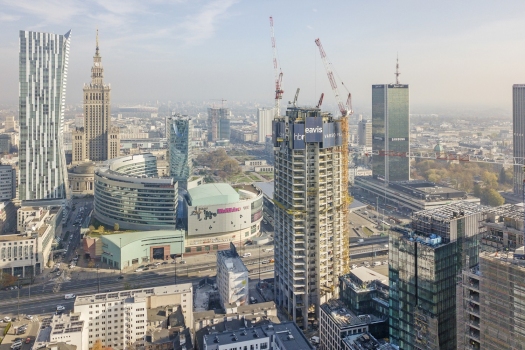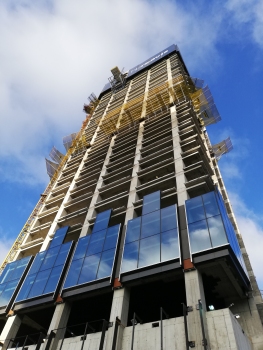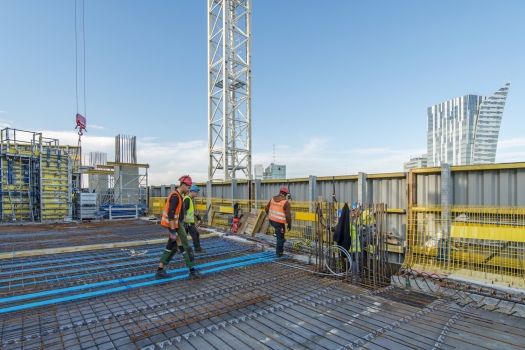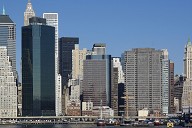The Varso Tower – 310 m above Warsaw
The Polish capital’s high-rise skyline is expanding steadily. The new Varso Tower will be one of the highest buildings in Europe and the tallest in Poland. Situated in the centre of the city, near the Palace of Culture and Science, the building features a restaurant and observation deck on top with panoramic views across Warsaw. London architectural firm Foster and Partners is responsible for the design of the Varso Tower project, which has glass façades designed to flood interior spaces with daylight.
Media
The entire Varso Place development covers a total leasable area of 144,000 m². Apart from offices, the complex will contain a range of facilities including a hotel, fitness club, medical centre, multiple restaurants and cafés. Not only will the Varso Tower enrich the architectural scene in Warsaw, it will also showcase the city’s potential as a prominent European business and academic location. The completion of the project is expected for end of 2021.
Highest viewing point in Poland
The tower comprises 53 above-ground stories and some 70,000 m² of office space. It also has the highest viewing point in Poland at the height of 230 m. Doka is supplying a custom formwork solution for the international workspace provider HB Reavis responsible for the development of the project.
Particular challenge: geometry of the building core
The geometry of the building core and the inner-city location of the construction site presented particular challenges for this project. The geometry is reminiscent of a parallelogram, in which the triangular shape of the building shafts also presented some structural challenges. Besides, the structure of the core was significantly affected by the architecture of the upper floors, which had to be carefully considered from the conception phase.
The complex geometry of the building necessitated the use of framed formwork Framax Xlife. With this system, only a few units were required to create a 15-centimetre grid into which all the connecting materials could be seamlessly integrated. The significant distance between anchors meant that assembly time could be reduced. Specified unit formats and consistent unit grids ensured optimum usage of formwork materials.
A unit ceiling boarding was used for the construction of the individual levels. Large 3 m² units could be inserted with this bearer-free system, which represented a significant saving in time. The mating surfaces were capped using Dokaflex seamless interlocking. The Doka concept is characterised by self-climbing forming and working platform SCP for the building core as well as the Table Lifting System TLS for quick and secure vertical construction without a crane. This combination enabled a significant increase in the speed of the construction process so that a five-day cycle could be established.
References
Structure Types
- About this
data sheet - Product-ID
7674 - Published on:
26/06/2020 - Last updated on:
07/12/2020






